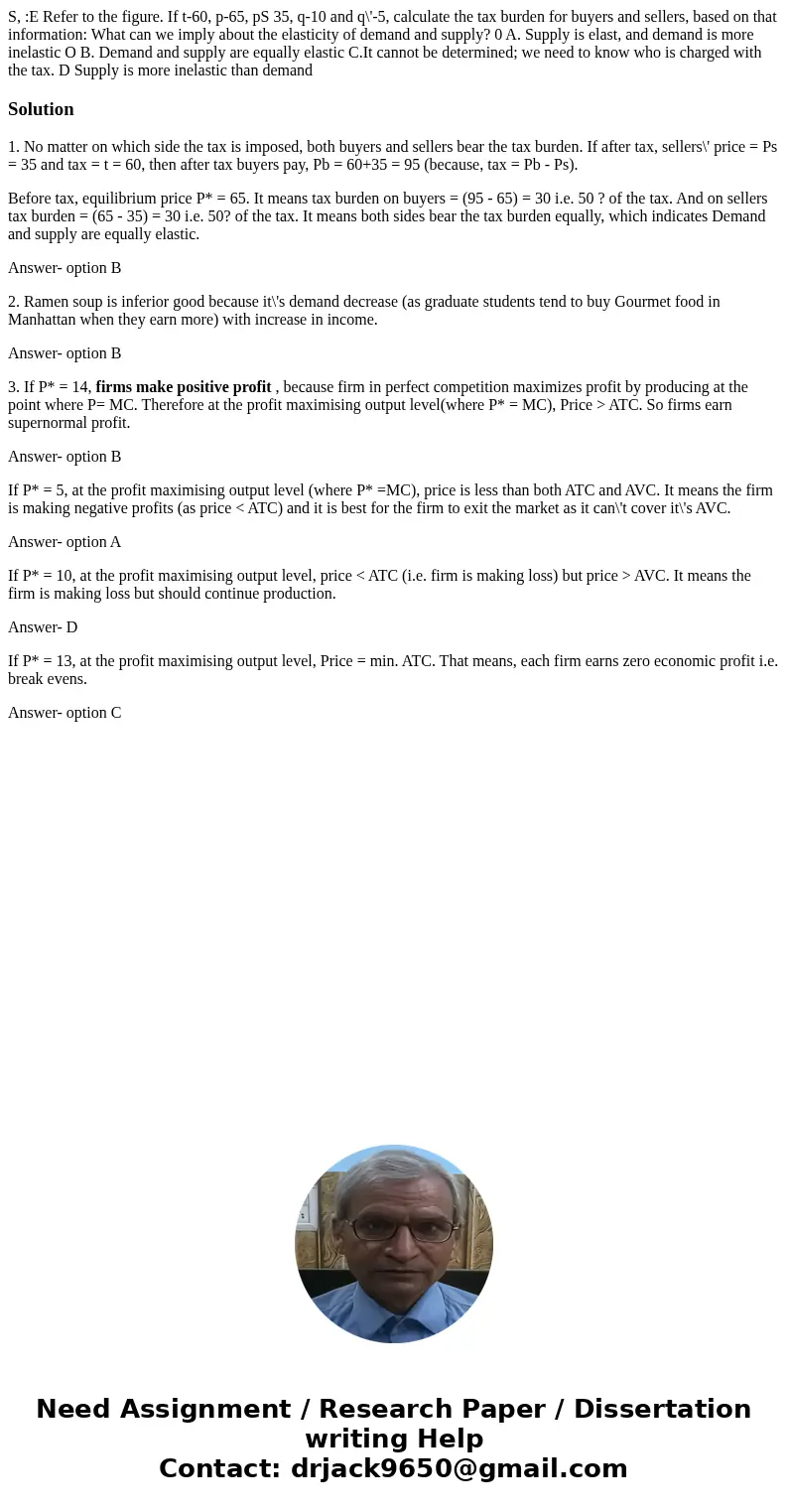S E Refer to the figure If t60 p65 pS 35 q10 and q5 calculat
Solution
1. No matter on which side the tax is imposed, both buyers and sellers bear the tax burden. If after tax, sellers\' price = Ps = 35 and tax = t = 60, then after tax buyers pay, Pb = 60+35 = 95 (because, tax = Pb - Ps).
Before tax, equilibrium price P* = 65. It means tax burden on buyers = (95 - 65) = 30 i.e. 50 ? of the tax. And on sellers tax burden = (65 - 35) = 30 i.e. 50? of the tax. It means both sides bear the tax burden equally, which indicates Demand and supply are equally elastic.
Answer- option B
2. Ramen soup is inferior good because it\'s demand decrease (as graduate students tend to buy Gourmet food in Manhattan when they earn more) with increase in income.
Answer- option B
3. If P* = 14, firms make positive profit , because firm in perfect competition maximizes profit by producing at the point where P= MC. Therefore at the profit maximising output level(where P* = MC), Price > ATC. So firms earn supernormal profit.
Answer- option B
If P* = 5, at the profit maximising output level (where P* =MC), price is less than both ATC and AVC. It means the firm is making negative profits (as price < ATC) and it is best for the firm to exit the market as it can\'t cover it\'s AVC.
Answer- option A
If P* = 10, at the profit maximising output level, price < ATC (i.e. firm is making loss) but price > AVC. It means the firm is making loss but should continue production.
Answer- D
If P* = 13, at the profit maximising output level, Price = min. ATC. That means, each firm earns zero economic profit i.e. break evens.
Answer- option C

 Homework Sourse
Homework Sourse